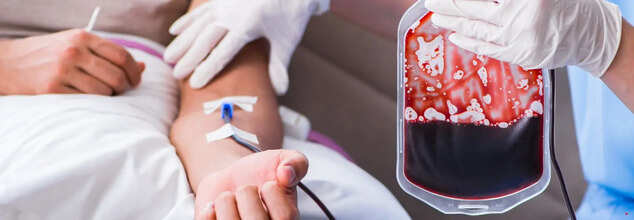- Health Conditions A-Z
- Health & Wellness
- Nutrition
- Fitness
- Health News
- Ayurveda
- Videos
- Medicine A-Z
- Parenting
- Web Stories

(Credit-Canva)
Your Heart Health Could Be At Stake Due To The Neighborhood You Live In
In 2022, about 1 in 5, which is around 702,880, people died due to cardiovascular diseases (CVD) in the United States. There are many factors around you that affect your heart health. Things like what food you eat, whether the area you live in is polluted or not and also what kind of lifestyle you lead. There are many risk factors for heart diseases like high blood pressure, high cholesterol levels or smoking, which are key risk factors according to the Centers of Disease Control and Prevention (CDC). The CDC explains about 47% of US citizens have at least one of these three risk factors.
Another risk factor could be the place you live in. A new study published in the European Society of Cardiology April 2025 revealed that the walkability of a neighborhood can play a big role for your cardiovascular health. The study revealed that individuals living in areas with low walkability had a 5% higher risk of developing CVD compared to those in very walkable neighborhoods. Interestingly, even in neighborhoods that improved in walkability over time, the risk of CVD remained about 5% higher for those who started in low-walkability areas, possibly due to the lasting effects of earlier sedentary habits.
What Makes A Neighborhood Walk-Friendly?
To figure out how walkable a neighborhood is, the researchers in the study looked at several things. They checked how many people lived in the area (population density), how many shops were nearby, if there were parks and green spaces, and if there were sidewalks to walk on. They also considered if different types of buildings were mixed together (like shops and homes), if there was good public transportation, and how well the streets connected to each other. All these things together helped them decide how easy it was to walk around in a certain neighborhood.
Researchers studied over three million adults who were at least 40 years old and didn't have any heart problems when the study started. The researchers kept track of how walkable each person's neighborhood was for 13 years. They also checked if the walkability of these neighborhoods stayed the same, got better, or got worse during that time.
The findings of this study support what doctors have known for a long time: moving your body is good for your health, especially your heart. What's interesting is that you don't need to do intense workouts to see the benefits. Even small amounts of activity, like walking your dog in a park or carrying your groceries home from the store, can make a difference. These little bursts of energy throughout the day can add up and help lower your risk of getting heart disease.
Should People Opt For More Walkable Places?
A report from 2023 from Smart Growth America found that less than 7% of people in America actually live in very walkable urban neighborhoods. Interestingly, studies have shown that minority groups often live in more walkable neighborhoods. However, these same groups are also more likely to suffer from heart and blood sugar problems. This might be because even in walkable areas, factors like safety, clean environments, and good sidewalks and parks might not be available in all neighborhoods.
Even if you don't live in a very walkable area, there are still things you can do to move more. You might need to get a little creative! You can try lifting weights or doing yoga while you watch TV. If you drive to the store, park a little further away so you have to walk more. Take the stairs instead of the elevator. Stand up and move around when you're on the phone, have walking meetings if possible, and make sure to get up and stretch every hour.

Why Its Important To Check The Expiry Date On Your Pregnancy Test?
If you're trying to conceive or even think you might be pregnant, the wait and anticipation for a pregnancy test can be nerve-wracking—hope, worry, excitement, or fear all in one little plastic stick but before you rip open that foil package, there's something important you may be forgetting: the expiration date.
Yes, pregnancy kits do have expiry dates. And taking one which has passed that date may cause false results. This article touches on why checking that date on the kit first is important before you test, how pregnancy kits work, and what dangers such expired kits possess. Supported by expert opinion and scientific knowledge, this guide endeavors to equip you with the knowledge you require for making informed reproductive health choices.
Home pregnancy tests detect the human chorionic gonadotropin (hCG) hormone in your urine, which your body begins making shortly after the fertilized egg implants in your uterus. The test sticks use special antibodies with chemicals that have been treated to respond to hCG and report a positive finding—usually lines, plus symbols, or messages on a display.
With time, though, the delicate components break down. After the test has reached or exceeded its expiration date, the chemical reagents can no longer act dependably. That is, the test might not register hCG when it's actually there, providing you with a false negative result, or—much less often—report a false positive based on poor chemical reactions.
What Happens When a Pregnancy Test Expires?
The date of expiration on a pregnancy test is not merely a courtesy. Companies test their products extensively to find out how long the ingredients will be stable and consistent under normal storage conditions. A pregnancy test will usually be effective for one to three years from the date of manufacture.
Once that time has passed, the antibodies that are employed to identify hCG start to weaken. This weakening is subtle but significant—making the test incapable of giving accurate results. The older the test, the greater the likelihood that you'll leave with a result that doesn't accurately represent your pregnancy status.
Just as important as the expiration date is how the test is stored. According to healthcare professionals, the performance of a pregnancy test can deteriorate even before its listed expiry if it’s stored improperly.
Avoid exposing the test to heat, moisture, or direct sunlight. A bathroom medicine cabinet, while convenient, is often not ideal due to the humidity from showers and temperature fluctuations. Instead, keep pregnancy tests in a cool, dry place, and avoid unwrapping individual tests until you’re ready to use them. Unsealing the protective foil can introduce air and moisture that degrade the chemicals faster.
How to Identify an Expired Test?
Always inspect the outer package and test wrapper individually for a printed expiration date. If it is absent or smudged, better not take a risk. Also, beware of buying tests from third-party retailers or online stores where expired stock may go unnoticed.
It's also good to know that even tests just purchased can be old inventory. If you've had a test kit in your bathroom drawer for more than one year, verify the printed date before you use it.
Can You Trust an Expired Test?
Technically, it's possible for an outdated pregnancy test to return a correct result—but it's not reliable. The odds of false negatives grow more sharply with time, which can cause confusion, worry, and delay in obtaining critical prenatal care.
Under FDA recommendations, most erroneous results from past-due tests are likely to be false negatives. This may lead one to continue habits or drugs that are not best practiced in early pregnancy—or lose the opportunity to start early prenatal supplements or tests.
The effect of depending on an out-of-date pregnancy test isn't only medical—it's psychological as well. Inaccurate results can induce undue distress, confusion, or early rejoicing. Even worse, they may stall time-critical health choices like verifying the pregnancy through a physician, making blood work appointments, or starting lifestyle modifications to facilitate a healthy pregnancy.
In medical situations where time is of the essence—like watching over high-risk pregnancies or starting specific treatments—true, timely information is paramount.
Best Practices for Taking a Home Pregnancy Test
To ensure most accurate results, follow these steps:
- Inspect the expiration date before taking any test, even if the package appears new.
- Take first-morning urine when hCG is most concentrated in the urine.
- Wait until the first day of your missed period to take the test; testing earlier riskily produces a false negative.
- Take directions exactly, including timing when to read the results.
- Dispose of unused tests properly, in a dry, cool environment and in their original sealed package.
How Expired Pregnancy Tests Impact Health and Results?
Taking an expired pregnancy test can result in incorrect results, which might lead to undue confusion or undue delay in taking the appropriate next step. Here's what you should know regarding the effectiveness of an expired pregnancy test:
Increased Chance of False Negatives
One of the most significant problems with using an outdated pregnancy test is the increased likelihood of getting a false negative result. This is where the test will show that you're not pregnant when you actually are. This is due to the chemical compounds, especially the antibodies employed to identify hCG, breaking down over time, thus it becomes hard for the test to give a true result.
Degraded Antibodies
Pregnancy tests detect human Chorionic Gonadotropin (hCG), a hormone that is formed during pregnancy. After a while, the antibodies in the test, which cause a response when hCG is present, become weakened. So even if you are pregnant, the test may fail to measure the hormone at a level that is high enough.
Health Risks
As per the U.S. Food and Drug Administration (FDA), expired pregnancy tests tend to give false negatives rather than false positives. A false positive may also occur but is less so with expired tests.
Exposure to External Factors
The reliability of a pregnancy test is also affected by the way it's stored. Incorrect storage, for example exposure to sunlight, humidity, or heat, causes the components to degrade faster and results in more opportunities for getting incorrect results prior to reaching expiration.
Waste of Time and Money
Using an expired test not only reduces the likelihood of getting an accurate result but also wastes your time and money. It's best to check the expiration date before using the test and, if expired, purchase a new one for peace of mind and more reliable results.
Emotional Stress
The effect of depending on an out-of-date pregnancy test isn't only medical—it's psychological as well. Inaccurate results can induce undue distress, confusion, or early rejoicing.
Though home pregnancy tests are an efficient and convenient means of early pregnancy detection, their accuracy relies on a number of major factors, foremost among them their expiration date. Testing with one that has expired may cause emotional distress and delay medical attention at a time when it's needed most.

Credit: Canva
Can You Get Malaria Without Mosquito Bite?
Malaria is a life-threatening disease that is spread to humans by a specific type of mosquito. It is preventable and curable, but only if detected on time. People who are at high risk include travellers, pregnant women and those with HIV/AIDS. On Friday, while marking World Malaria Day, the World Health Organisation (WHO) asserted that half of the total global population is at risk of this vector borne disease. So now, the question arises: how does it spread?
Malaria is a vector-borne disease. It is spread through female anopheles mosquitoes. These mosquitoes carry single-cell P. Falciparum, which is a pathogen behind this disease. There are five types of Plasmodium parasite, with P. Falciparum (which is found in the African region) and P. Vivax ( common outside the sub-Saharan region) being the most popular. Left untreated, P. Falciparum malaria can progress to severe illness and death within 24 hours.
Malaria Can Be Spread Through Blood Transfusion
But there is empirical evidence that it can also be transmitted through blood transfusion and contaminated needles. Transfusion-transmitted malaria (TTM) occurs when an uninfected person receives blood from a donor who is infected with malaria parasites. While malaria transmission through transfusion is rare, especially in non-endemic areas, it remains a significant concern in certain regions.
According to a systematic review of studies conducted by National Library of Medicine, Plasmodium parasites were shown to survive in whole blood and plasma when stored at 4°C for up to 18 days, and detectable parasites can present even up to 28 days when frozen, although with diminished infectivity.
How To Identify Malaria?
The early symptoms of Malaria are fever, headache and chills, which can usually start within 10 to 15 days of getting bitten by an infected mosquito. Some types of malaria can cause severe illness and death. Infants, children under 5 years, pregnant women, travellers and people with HIV or AIDS are at higher risk. Severe symptoms include:- extreme tiredness and fatigue
- impaired consciousness
- multiple convulsions
- difficulty breathing
- dark or bloody urine
- jaundice (yellowing of the eyes and skin)
- abnormal bleeding
Disproportionate Share Of Global Malaria Burden
The WHO African Region continues to carry a disproportionately high share of the global malaria burden. In 2023, the region was home to about 94% of all malaria cases and 95% of deaths. Children under 5 years of age accounted for about 76% of all malaria deaths in this region. Over half of these deaths occurred in four countries: Nigeria (30.9%), the Democratic Republic of the Congo (11.3%), Niger (5.9%) and United Republic of Tanzania (4.3%).

Credit: Canva
Could 3D Printing End the Organ Shortage Crisis?
Each year, hundreds of people around the world lose their lives waiting for a life-saving organ transplant. The demand for organs far outweighs the supply, leaving many patients with little hope. But what if we could print organs—tailor-made for each patient—using their own cells? While we're not quite there yet, researchers are making significant strides in this futuristic field known as 3d bioprinting.
Though the technology is still far from clinical trials, scientists believe that when 3d-printed organs become a medical reality, the process will likely involve a blend of cutting-edge imaging, personalised cell harvesting, and highly advanced bioprinting methods. Here's what this groundbreaking process could look like.
Step 1: Creating a Personalised 3D Model
To print a functional organ, the process begins with creating a precise 3D blueprint. While generic models can serve as a starting point, personalisation is key. Using imaging technologies like MRI (Magnetic Resonance Imaging) and CT (Computed Tomography) scans, medical professionals can generate a detailed digital model of the organ tailored specifically to the patient’s anatomy. This personalized design enhances the chances of a successful transplant by ensuring the printed organ will fit and function properly in the recipient’s body.
Step 2: Collecting Patient’s Cells And Preparing Bioink
One of the biggest hurdles in organ transplantation is rejection, which happens when the recipient’s immune system attacks the new organ. To reduce this risk, scientists aim to use the patient’s own cells to build the organ. These cells are harvested, cultivated in labs, and combined with a specially designed “bioink”—a gel-like substance engineered to mimic the structure of natural tissues. This bioink becomes the medium through which living cells can be precisely layered and formed into complex biological structures.
Step 3: Printing the Organ
With a personalized 3D model in hand and a supply of bioink rich in the patient’s cells, the actual printing process begins. The organ is built layer by layer, using bioprinters designed to handle delicate biological material. Some methods involve extrusion-based bioprinting, which pushes the bioink through a nozzle to form a structure, similar to how icing is piped onto a cake. Other techniques rely on light-based bioprinting, which uses beams of light to shape the biomaterial with incredible precision.
In some cases, additional cells may be added to the organ after printing to support its development or enhance functionality. Although the exact tools and materials are still being refined, technologies such as the BIO X, BIO X6, and LUMEN X are among those helping to push the boundaries of what’s possible in tissue engineering.
Road Ahead
While researchers are still navigating numerous scientific and ethical challenges, the vision of printing fully functional, transplantable organs is no longer science fiction. With continued innovation and global collaboration, 3D bioprinting could one day eliminate organ shortages altogether, saving countless lives and revolutionizing modern medicine.
© 2024 Bennett, Coleman & Company Limited

